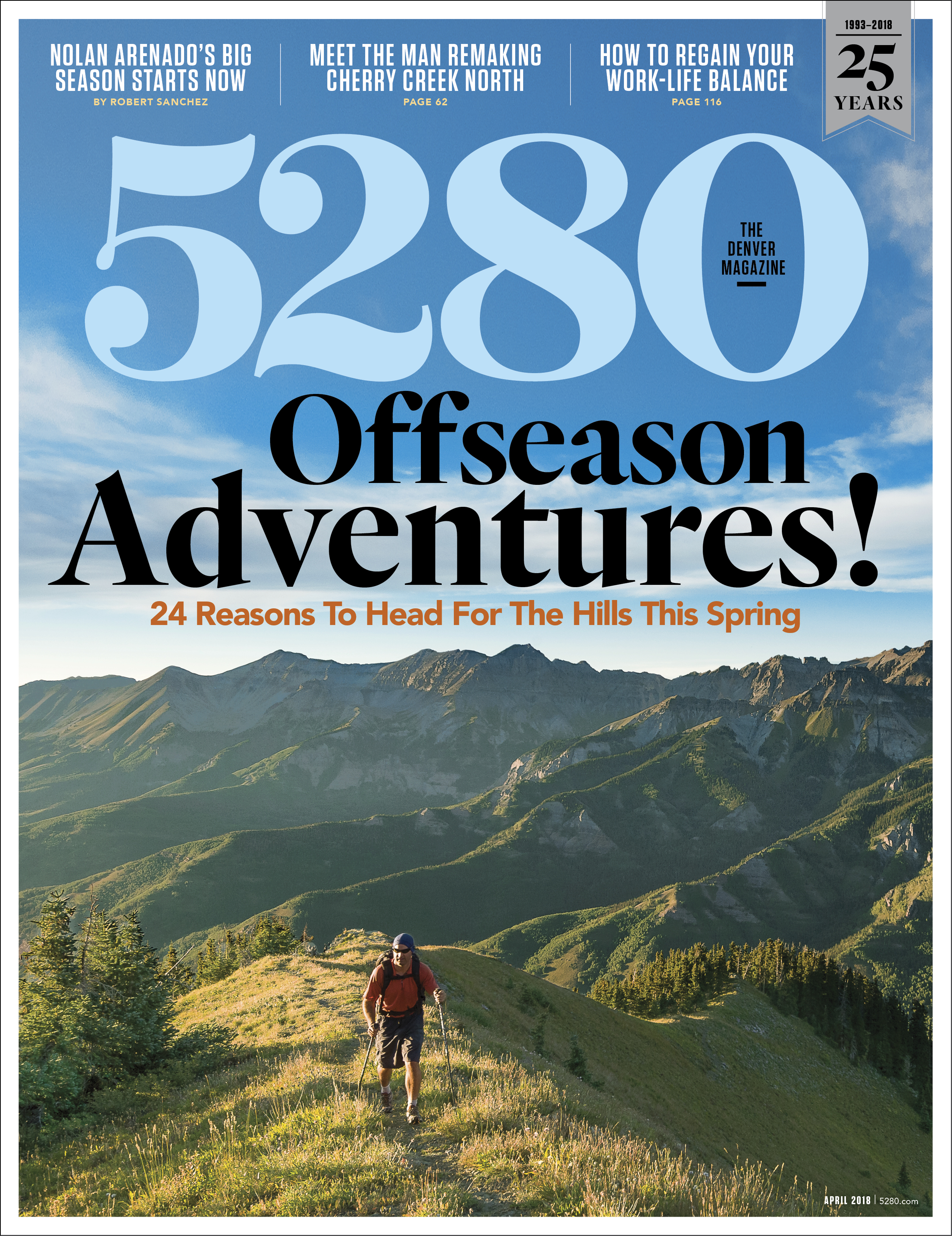The Local newsletter is your free, daily guide to life in Colorado. For locals, by locals.
When the sun rises at Moraine Park in Rocky Mountain National Park (RMNP), it slowly peaks out from behind Eagle Cliff, casting a pink-orange morning glow onto the pine-flecked slopes of the Continental Divide. The William Allen White Cabin, once owned by the eponymous Pulitzer Prize–winning writer, has a front-row seat to the grandeur. Inside, the scene is just as special: The newspaper editor’s rolltop desk and a few rocking chairs are arranged in front of a huge stone fireplace. It could all be yours—if you’re one of the lucky writers, musicians, photographers, or painters selected for RMNP’s artist-in-residence program when it returns from a yearlong hiatus (the cabin is currently undergoing renovations to make it even more spectacular) in 2019.
Given that the concept of artist residencies was born when renowned bronze sculptor Augusta St. Gardens retreated to rural New Hampshire in 1885 to sculpt in the serenity of nature, perhaps it’s not surprising that a host of artist-in-residence programs have sprung up at national parks and monuments. RMNP established the first in Colorado in 1984, and today, more than 50 residency programs—each with its own requirements, fees, and timelines—exist in national parks across the country.
The process is highly competitive; at RMNP, for instance, the average acceptance rate is six percent. Participants are typically required to provide an original work to the national park or give a demonstration or talk. “[These contributions] play an important role in documenting the history of the park and changes in the landscape over time,” says Jean Muenchrath, the longtime artist-in-residence coordinator for RMNP.
In exchange, these programs offer artists the chance to get away from the outside world. And although the national park experiences might not financially rival the stipends that come with residencies at many museums and universities, the scenic inspiration is unparalleled.
Exhibit A: Renowned painter Kathy Hodge (pictured) had the entire Wetherill Mesa area to herself for a week when she stayed in a historic hogan at Mesa Verde National Park. There, she sketched the sandstone plateaus where the Ancestral Puebloans lived and worked up to 2,000 years ago. “Being alone in the quiet and in the same exact place as they were and seeing the same view—that made me feel close to the [Puebloans],” Hodge says. “I thought about how they didn’t have other stimulations. At night, while looking up at the stars, I thought that they probably used their imaginations a lot.”









